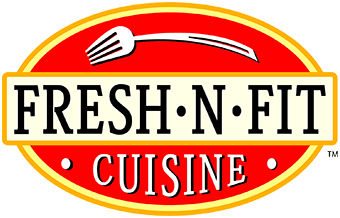
With all that has been going on around the country and world, it’s easy to overlook that May is women’s health month and that this week is National Women’s Health Week.
A balanced eating pattern is a cornerstone of health. Women, like men, should enjoy a variety of healthful foods from all of the food groups, including whole grains, fruits, vegetables, healthy fats, low-fat or fat-free dairy and lean protein. But women also have special nutrient needs, and, during each stage of a woman’s life, these needs change.
Eating Right
Nutrient-rich foods provide energy for women’s busy lives and help to reduce the risk of disease. A healthy eating plan regularly includes:
- At least three ounce-equivalents of whole grains such as whole-grain bread, whole-wheat cereal flakes, whole-wheat pasta, brown rice or oats.
- Three servings of low-fat or fat-free dairy products including milk, yogurt or cheese; or calcium-fortified soymilk. (Non-dairy sources of calcium for people who do not consume dairy products include calcium-fortified foods and beverages, canned fish and some leafy greens.)
- Five to 5-and-a-half ounce-equivalents of protein foods such as lean meat, poultry, seafood, eggs, beans, lentils, tofu, nuts and seeds.
- One-and-a-half to two cups of fruits — fresh, frozen, canned or dried without added sugars.
- Two to two-and-a-half cups of colorful vegetables — fresh, frozen or canned without added salt
Iron-rich Foods
Iron is important to good health, but the amount needed is different depending on a woman’s stage of life. For example, iron needs are higher during pregnancy and lower after reaching menopause. Foods that provide iron include red meat, chicken, turkey, pork, fish, kale, spinach, beans, lentils and some fortified ready-to-eat cereals. Plant-based sources of iron are more easily absorbed by your body when eaten with vitamin C-rich foods. To get both these nutrients at the same meal, try fortified cereal with strawberries on top, spinach salad with mandarin orange slices or add tomatoes to lentil soup.
Folate (and Folic Acid) During the Reproductive Years
When women reach childbearing age folate (or folic acid) plays an important role in decreasing the risk of birth defects. The requirement for women who are not pregnant is 400 micrograms (mcg) per day. Including adequate amounts of foods that naturally contain folate, such as oranges, leafy green vegetables, beans and peas, will help increase your intake of this B vitamin. There also are many foods that are fortified with folic acid, such as breakfast cereals, some rice and breads. Eating a variety of foods is recommended to help meet nutrient needs, but a dietary supplement with folic acid also may be necessary. This is especially true for women who are pregnant or breast-feeding, since their daily need for folate is higher, 600 mcg and 500 mcg per day, respectively. Be sure to check with your physician or a registered dietitian nutritionist before starting any new supplements.
Daily Calcium and Vitamin D Requirements
For healthy bones and teeth, women need to eat a variety of calcium-rich foods every day. Calcium keeps bones strong and helps to reduce the risk for osteoporosis, a bone disease in which the bones become weak and break easily. Some calcium-rich foods include low-fat or fat-free milk, yogurt and cheese, sardines, tofu (if made with calcium sulfate) and calcium-fortified foods and beverages, such as plant-based milk alternatives, juices and cereals. Adequate amounts of vitamin D also are important, and the need for both calcium and vitamin D increases as women get older. Good sources of vitamin D include fatty fish, such as salmon, eggs and fortified foods and beverages, like milk, as well as some plant-based milk alternatives, yogurts and juices.
Guidelines on Added Sugars, Saturated Fats and Alcohol
Women should be mindful of sources of added sugars, saturated fat and alcohol.
- The 2015-2020 Dietary Guidelines for Americans recommend limiting added sugars to less than 10 percent of daily calories. Limit added sugars including, sugar sweetened beverages, candy, cookies, pastries and other desserts.
- If you choose to drink and are of legal age, limit alcohol intake to one drink per day. One drink is equal to 12 ounces of beer, 5 ounces of wine or 1.5 ounces of liquor. Women who are pregnant should avoid consuming alcohol altogether.
- Focus on sources of unsaturated fats, such as vegetable oils, nuts and seeds, in place of foods high in saturated fat. Opt for low-fat or fat-free dairy products and lean proteins instead of their full-fat counterparts.
Balancing Calories with Activity
Since women typically have less muscle, more body fat and are smaller than men, they need fewer calories to maintain a healthy body weight and activity level. Women who are more physically active may require more calories.
Physical activity is an important part of a woman’s health. Regular physical activity helps with muscle strength, balance, flexibility and stress management.
Source: Sarah Klemm, RDN, CD, LDN, The Academy of Nutrition & Dietetics
Fresh ‘N Fit’s nutritionally balanced meals are perfect for all of your mealtime needs so if you’re ready to try give us a try, use offer code BLOG12MAY at checkout to get $20 off your first order plus 50% off of our contact-free home delivery.
